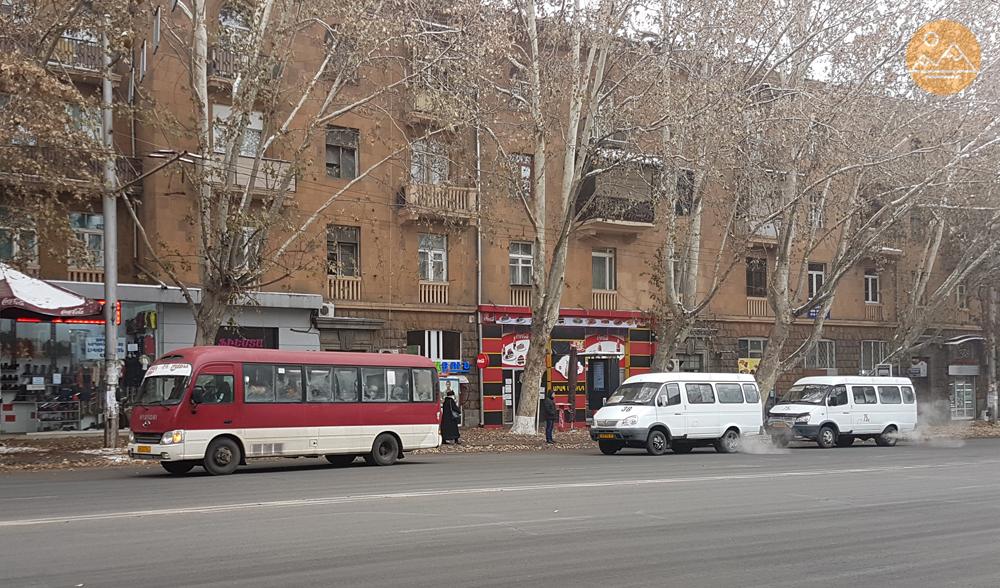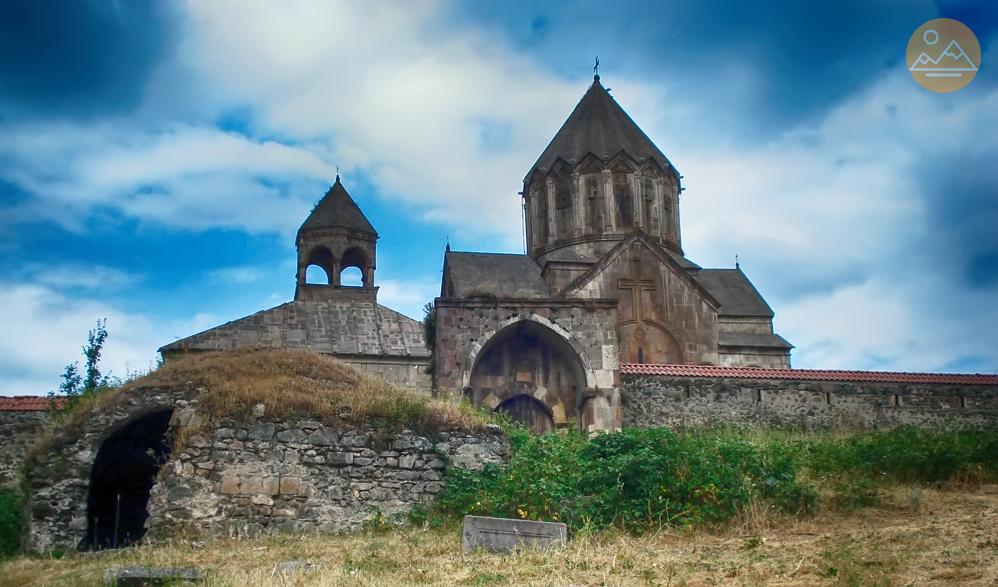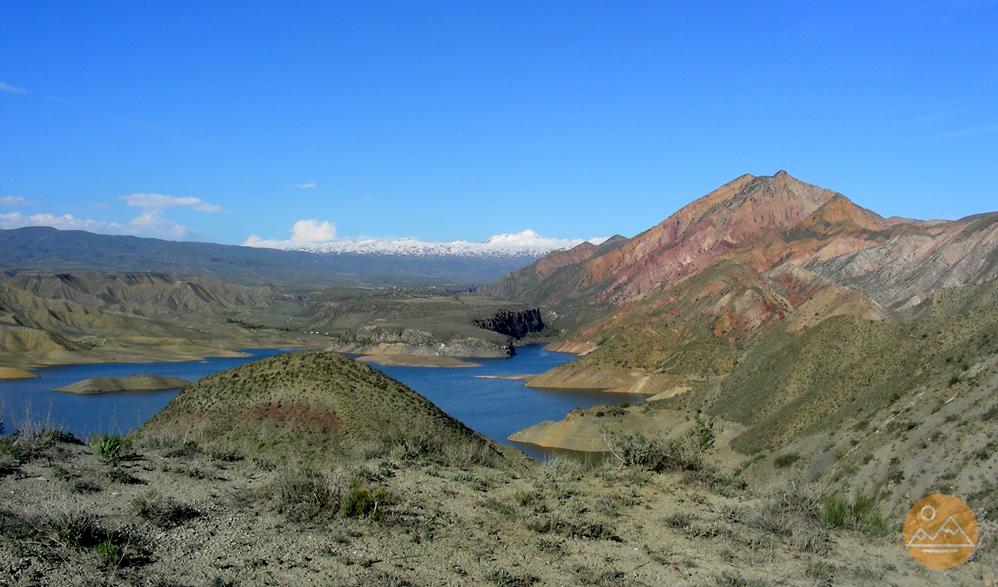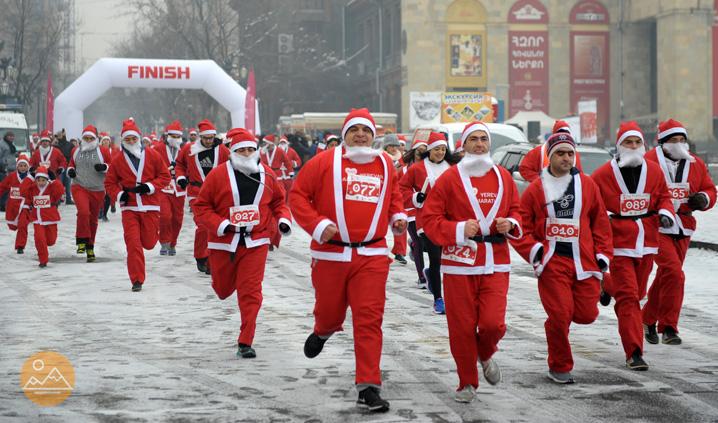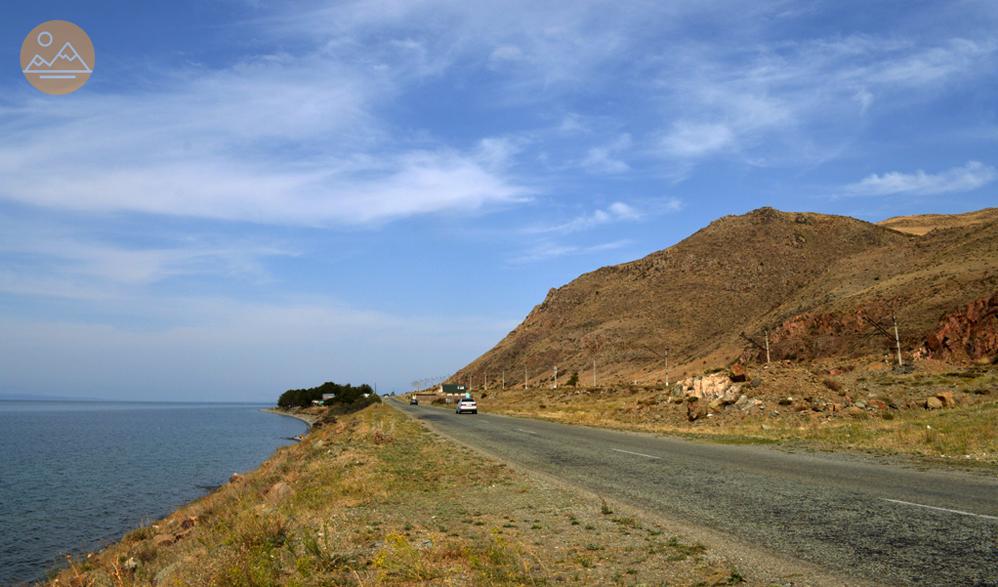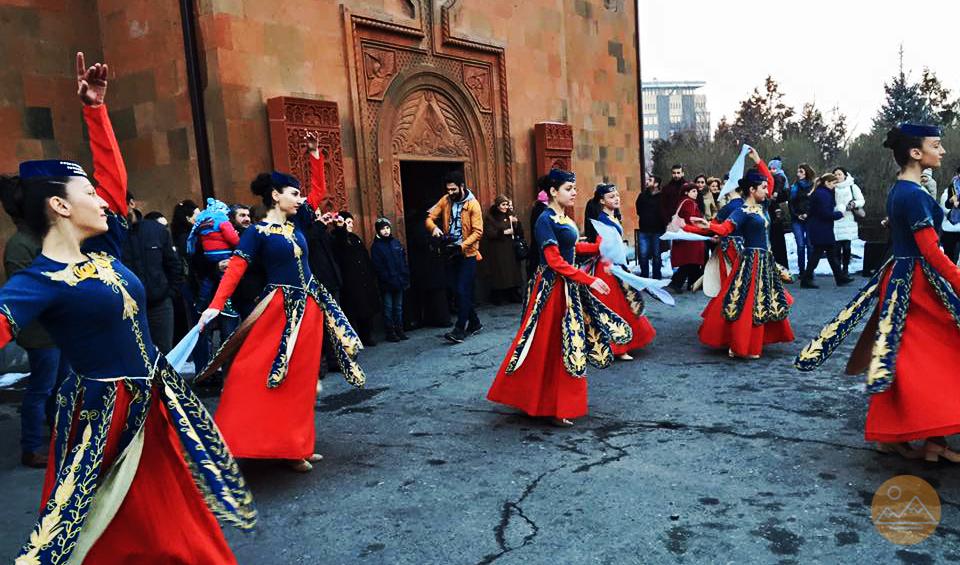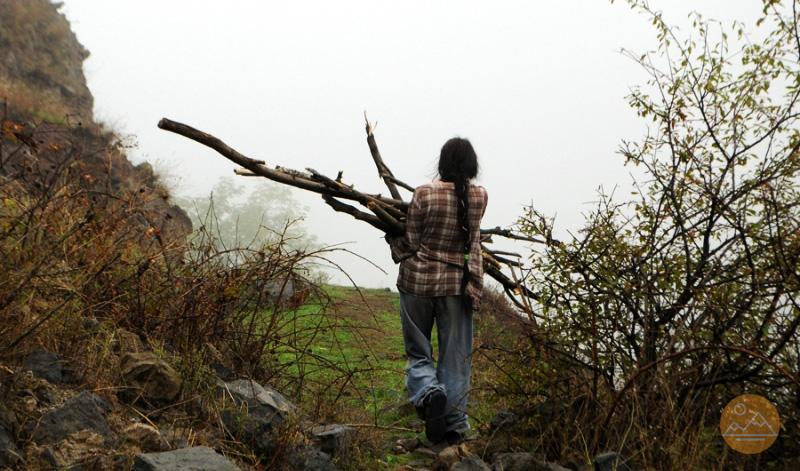-
 Graham Simmons
Graham Simmons

We did it / Photo: Suren Kazarchian
Armenia – a Bonsai Country with a Big Heart
Views - 1732
It’s not a large country. With an area of just 30,000 km (about half the size of Tasmania) and a roller-coaster terrain with mountains rearing up to 4,000 meters above sea level, Armenia is a bonsai nation whose people seem to have been hewn from the landscape itself.

Rugged, down-to-earth and open-hearted – these are the most endearing traits of Armenian people. They are constantly giving of themselves and expecting nothing in return, and if by chance you ARE able to offer something in return – even something as simple as a smile – then they appear to be genuinely delighted.
When you come to a country that has suffered and endured so much for so long (including Mongol and Persian invasions as well as the “Armenian Genocide” of 1915), you realize that contentment comes from small things, such as beautiful sunny weather, stunning natural scenery, bountiful nature and, it has to be added, plenty of home-made mulberry vodka.
Despite its small size, Armenia is divided into eleven provinces, each with its own dialect, climate and lifestyle. When it’s 40 degrees in the capital Yerevan, there are still snowdrifts on the high mountains of Syunik province. And while much of the country is devoid of tree cover, the river valleys are lush and fertile, yielding an astonishing range of produce – from the ubiquitous grape-vine to apricots, pomegranates (a national symbol), walnuts and organic vegetables.
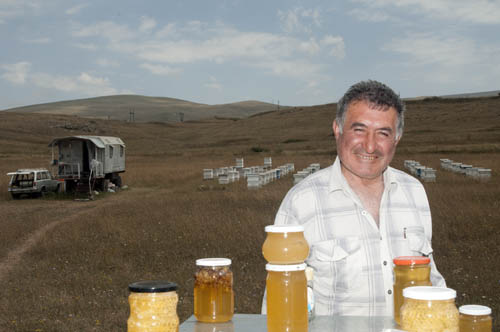
And the honey! With a landscape carpeted in wildflowers throughout spring and summer, Armenia produces what has been described as the world’s best honey. “This is such a poor country that we didn’t have any pesticides to destroy the bees”, says beekeeper Mushé. “I have over 50 hives, and have never seen any decline in bee numbers.”
I set out to explore this intriguing country, starting in the northwest “art deco” city of Gyumri. Along the road to Gyumri the land seems and feels pre-ancient, strewn with limestone and tufa outcrops that seem to proclaim their right to rise above the earth and become part of the built environment. Indeed, throughout Armenia it is rare to find a building that is NOT constructed of stone – from salmon-coloured volcanic tufa to slate, limestone, basalt and porphyry.
A stroll through Gyumri, which was hit by a catastrophic earthquake in 1988 in which up to 50,000 people died in a space of just eight minutes, reveals the extent of the earthquake damage as well as the extraordinary rebuilding effort now underway.
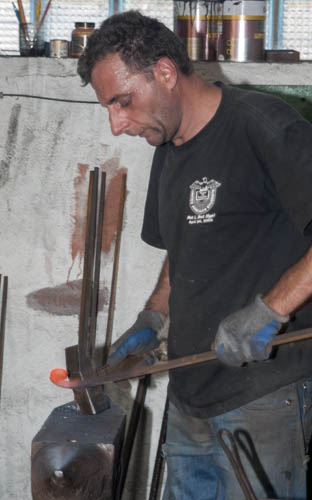
One building that mercifully survived the quake is the 1898 Aleksandropol Brewery (after the city’s name during Tsarist times), a German-established plant that produces arguably the country’s best beer, Aleksandropol Lager. There’s even a pipeline under the road from the brewery to the funky Poloz Mukuch Restaurant, opposite.
Gyumri is also home to many other crafts, including intricate hand-crafted ironwork. One of the local blacksmiths, Aram Seksinian of the Irangyuni Forge, slaves away in 35 degree heat over a hot anvil, producing the ornamental wrought-iron scrollwork that will later decorate restaurants, galleries and private homes throughout the country.
One establishment using Gyumri ironwork is the 85 year old Voskevaz winery, in the Aragatsotn region northwest of the capital Yerevan, recently remodeled by artist Gago Ognassian. The vineyards, at an altitude of 1600 metres, produce a trademark wine using the millennia-old Areni Noir grape variety. It’s a stunning wine, with incredible depth enhanced by ageing in Armenian oak from one of the country’s few forested regions, the south-eastern Dilijan province.
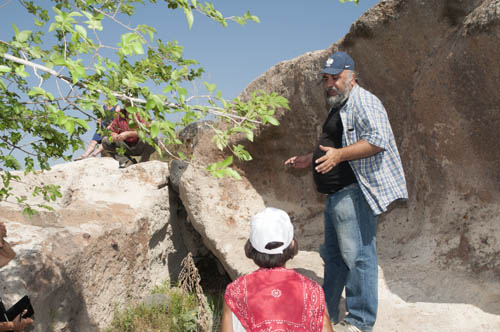
At the nearby Agarak archaeological site, with over four square km of rock tombs dating back 3,000 years, archaeologist Boris Gasparyan points out the use of wine in the burial ceremony. To the ancient Urartians, wine served as “a covenant between gods and humans”. Wine vats have been dug out the rocks, with in many cases a horse-shoe shaped altar above the vat.
Even older are the wine vats in Areni-1 cave, in Khor Virap province. Seeds from the Areni noir grape variety – the same as that used at Voskevaz winery – were discovered in the cave in 2007, and have been dated to 4,200 BC, making this the world’s oldest winery. The excavations are a huge undertaking, and are expected to reveal many more finds.
The visitor to Armenia will realize before very long that this is a country with a profound intellectual heritage. With around 99% literacy and a unique 36-letter alphabet, the country punches way above its weight in the fields of education, science and technology. Chess is an integral part of the school curriculum. Sacred geometry and astronomy reached high points at the ancient temple of Garni and at Carahunge (or Karahunj), which is much older than Stonehenge and which allowed the ancient Armenians to measure the seasons and predict solar and lunar eclipses a whole millennium before the Egyptians were able to do the same.
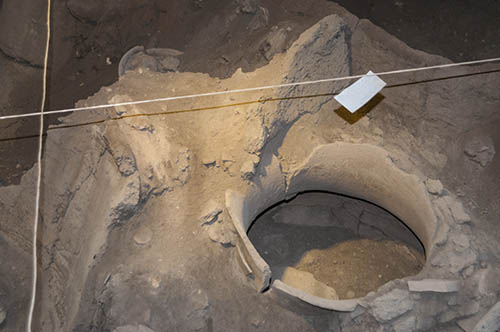
Armenia’s famous monasteries and churches (the country claims to be the world’s first to have adopted Christianity as a state religion) are often built atop the ruins of ancient temples. The acoustics of many of these churches are totally gobsmacking, the sound reverberating within the walls and throughout your whole body as though the sound is coming from all directions at once.
There are those who say that the church has deliberately suppressed Armenia’s ancient past, But whether they are correct or not, it’s hard not to be moved by the music of the Armenian Apostolic Church. I’m privileged to visit the country’s principal cathedral at Etchmiadzin, on the day of the Blessing of the Grapes – the most important event on the calendar after Christmas and Easter. Rival choirs on either side of the conical-domed church pierce the skies with their ethereal, age-old chants – and it’s not difficult to imagine that some of their harmonies have penetrated the very wine-producing essence of the grapes.
The province of Jermuk is one of Armenia’s greatest assets. During the days of Soviet rule, Jermuk was known as the best mineral springs resort in the whole of the USSR. With the collapse of the Soviet Union, Jermuk languished – unknown and unvisited, But now, with the opening of the new Hyatt Place Jermuk hotel, the resort with its internationally-renowned underground sources of medicinal waters is staging a big comeback.
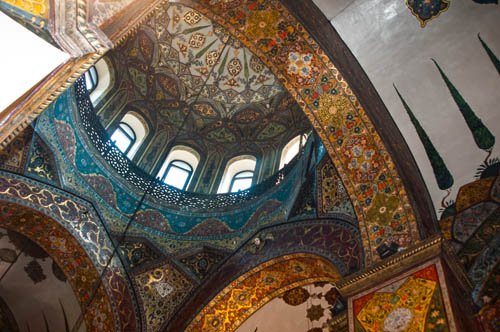
The high plateau of Syunik province, in the very south of Armenia, is home to one of Armenia’s richest assets. Going off-road, we venture up to 3,400 meters above sea-level, onto flower-studded grasslands that yield both medicinal herbs and natural dyes for the country’s famous carpets. In just one 2.5 square kilometer area, German archaeologists have recently uncovered over 10,000 petroglyphs (rock carvings) dating back some 7,000 years, when hunter-gatherers lived on the plateau. The plateau stretches 30 x 240 km – so there is more than just a little work still to be done.
Finally, I arrive back in the Armenian capital Yerevan, a surprisingly cosmopolitan city, with a Canberra-like grid superimposed upon an ancient settlement (The city will be celebrating its 2,800th anniversary in 2018). People stroll the garden-filled squares at all hours, soaking up the sunshine and the heady range of civic attractions – from wine bars and jazz cafes to open-air music festivals.
No doubt about it – Armenia is a feast not just for the senses, but for the heart too.

